Fungus on the feet
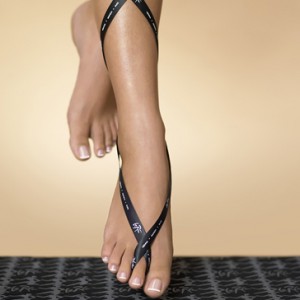
- Types of fungus on the legs
- Causes of the appearance of fungi
- Forms of fungus on the legs
- Symptoms of foot fungus
- Fungus test at home
- How to cure the fungus with medical means?
- Folk remedies for the treatment of fungus
- Preventative measures
- Additional conditions for effective treatment
- Stock footage
Fungus on the legs is a fairly common disease. Every 10 inhabitants of the planet are familiar with it. This disease is caused by microorganisms and brings, to a greater extent, an aesthetic problem than a physical one. But it should be remembered that fungi, actively multiplying on the skin and nails of a person, release toxins that enter the bloodstream. For many years, the vital products of microorganisms are able to poison the body, inhibit the immune system, affecting all organs.
to contents ↑Types of fungus on the legs
The situation is further aggravated by the fact that many people do not even suspect that they are carriers of the fungus, as it settles and develops imperceptibly. In nature, there are a large number of types of fungi, but only a few cause disease in humans.
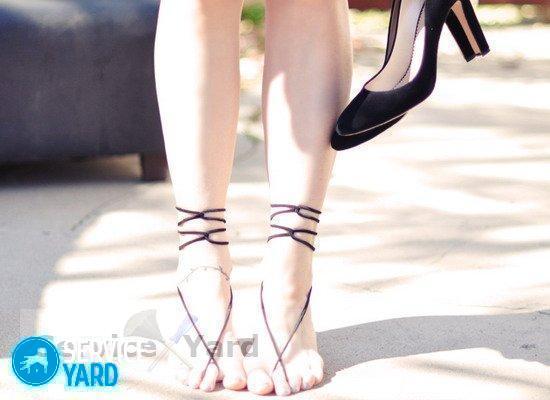 The microorganisms that affect the feet include the following groups of fungi:
The microorganisms that affect the feet include the following groups of fungi:
- Anthropophilic. They only cause disease in humans. You can get infected only from a sick person.
- Zooanthropophilic. It affects not only people, but also animals. You can get infected from a sick person and, accordingly, from an animal.
- Candida. This type of organism is constantly present on the surface of human skin. It becomes pathogenic only with a significant decrease in immunity. May enter the body from the surface of common objects.
to contents ↑Important! As soon as the primary symptoms of the disease of the fungus on the legs appear, it is necessary to immediately begin treatment. So that your efforts are not in vain, approach the solution of the problem with knowledge of the matter. From the beginning, establish the cause of the appearance of the fungal infection.
Causes of the appearance of fungi
For the disease to appear, at least a few prerequisites are necessary for the development of the fungus on the legs. These include:
- Weak immunity. A decrease in immunity can cause various endocrine and vascular diseases, for example, varicose veins, diabetes, flat feet, and stress can also provoke an infection.
- Excessive sweating or, conversely, dry feet. Easy ways to penetrate the skin of the fungus can be abrasions, cracks between the toes, resulting from excessive sweating or, conversely, dry feet. When wearing too narrow shoes, various abrasions of the skin also appear. With poor wiping of the feet after water procedures, various scuffs and cracks can also appear, where parasites easily penetrate.
- Increased vulnerability of the nail or foot skin, which occurs after the pedicure. Protection of the cuticle or keratinized skin after this procedure is absent.
- Wet shoes and socks. For the reproduction of the fungus, moist and warm conditions are needed, which poor-quality shoes or wet socks will kindly provide.
Important! Each person, the characteristics of immunity are different, so do not use other people's shoes and hygiene items.
- Inadequate foot hygiene.
- Close contact with the patient.
- Excessive use of antibacterial drugs.
to contents ↑Important! Fungal transmission on the beach is unlikely: dry sand and sea water have a detrimental effect on microorganisms..
Forms of fungus on the legs
Fungal lesions are divided into 2 types: those that appear on the skin of the foot or on the nails.
Important! Foot disease is combined under the general term “foot mycosis”. The forms of foot diseases are different and often combine with each other. Sometimes, at the initial stage, the disease appears only on one foot, and then moves on to the other.
Symptoms of fungal infection of the feet:
- an area of redness appears on the skin of the foot, which subsequently flakes;
- itching and soreness at the site of the lesion;
- small bubbles may appear, which merge into larger ones, form erosion.
to contents ↑Important! A continuation of a long-term infection of the foot may cause onychomycosis - damage to the nail plates. This disease can also appear as a primary fungal infection.
Symptoms of foot fungus
When choosing antifungal drugs, it is important to know the name of the pathogen. The most common are: Trichophyton interdigitale, Epidermophyton floccosum, Trichophyton rubrum. The characteristic symptoms for this disease can be:
- darkening of the nail;
- deformation of the shape of the nail plate;
- the nail becomes brittle and exfoliates;
- pain and itching at the tips of the toes;
- unpleasant odor;
- nails can grow into the skin or form cavities.
to contents ↑Important! The appearance of other skin diseases such as psoriasis, eczema, and allergic dermatitis can also accompany these symptoms. When the first symptoms of infection appear, take urgent measures to cure the fungus on the legs and it does not spread further on the skin.
Fungus test at home
If you doubt the presence of the fungus, then carry out the following screening test:
- Dilute potassium permanganate crystals in warm water until a purple solution is obtained.
- Dip the feet in the solution for a while.
- Pay attention to the color of the nail: the affected areas will become light, and not the affected ones will be brown.
to contents ↑Okay If you have a skin disease, consult a dermatologist who will refer you for tests. In the case when a specific fungus on the legs was determined, treatment will be faster and more effective.
How to cure the fungus with medical means?
Today, there are many antifungal drugs that can effectively fight infection. In order to be completely cured, it is necessary to take the medicine for a long time and in sufficiently large doses.
Antibiotics and antifungals
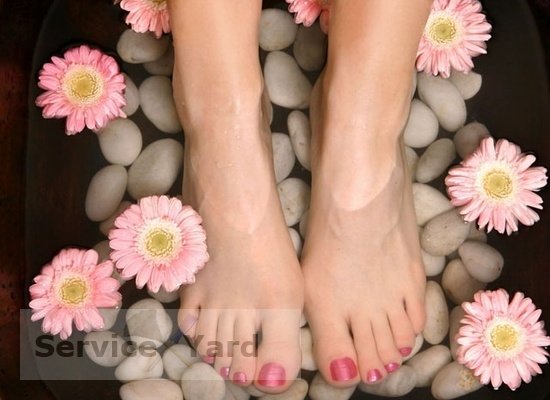 The best effect from the use of drugs is achieved with the method of pulse therapy: shock doses of an antifungal agent are used in short courses, followed by a long break.
The best effect from the use of drugs is achieved with the method of pulse therapy: shock doses of an antifungal agent are used in short courses, followed by a long break.
Important! Itraconazole is taken for 3 months in courses. It is suitable for the treatment of feet and nails. Systemic antibiotics also include: ketoconazole, terbinafine, fluconazole, griseofulvin. They are usually used not only in the form of ointments, but also tablet preparations for oral administration in the form of complex therapy. This method of administration allows you to simultaneously cleanse the patient’s blood from pathogenic microorganisms.
Despite the prevailing opinion about the safety of such drugs, all drugs for the treatment of mycoses are very toxic, so they should be taken only under the supervision of a doctor.
Means of local application
For the treatment of foot fungus, you can also use topical agents: gels, ointments, creams, suspensions, varnishes, etc. The drier your skin, the more greasy the foundation you need to choose:
- ointment is suitable for heels;
- for interdigital space - gel or suspension;
- use special varnishes for nails.
Important! The following medicines have proven themselves most effectively:
- Lamisil, Atifin, Exifin, Terbix, Terbinafine, Fungoterbin - based on the active substance terbinafine.
- Batrafen and Acidopyroxolamine - based on cyclopiroxolamine;
- Zalain - based on sertokanazole;
- Exoderil - based on naphthyne;
- Nizoral and Mycozoral - based on ketoconazole.
Effective treatment regimen
To cure the fungus on the legs quickly, consider these recommendations:
- Use systemic antifungal agents with local ones.
- At the initial stages, it is possible to use exclusively topical preparations.
to contents ↑Important! Treatment during pregnancy can cause unwanted effects, so refrain from using serious drugs before birth or until the end of the lactation period.
Folk remedies for the treatment of fungus
Alternative methods can be applied in isolation only at the very early stage of the disease, or use them as an addition to the main therapy. In case you are afraid of being at risk of toxic infection of the body, also use simple and effective homemade recipes to combat your problem. All of the proposed remedies can alleviate the symptoms, and often completely solve the problem of how to cure the fungus on the legs.
Salt and iodine
Using this method, remember that you need to adhere to discipline, and most importantly - the desire to get rid of the disease, and perform the procedures in the following sequence:
- Begin the daily procedure with a salt bath: pour hot salt (preferably sea) in hot water (70 C) and add soda in the following proportions: 2 tbsp. l salt, 1 tbsp. l soda per 1 liter of water.
- Dip your feet in the solution for 30 minutes.
- Without removing the legs from the bath, clean the affected areas on the skin and nails as much as possible: cut the nail with scissors and treat it with a nail file as much as possible, sand the feet with a nail file or a pebble.
- Wash your feet with soap and treat them with hydrogen peroxide.
Important! Use gloves to protect your hands.
- Dry your feet with a napkin.
- Iodine the surface of the foot, the area between the toes and the subungual ridges.
- On the affected areas, apply iodine 3 times after each drying (if treating the nail, soak the sawed areas several times with iodine).
- After the procedure, lubricate the feet with a softening cream.
- Repeat the procedure every day for a month.
Important! As you see, you will have to make a lot of efforts to cure the fungus on your legs, but you will be sure of the result and prevent re-infection in the near future.
Foot baths with milk
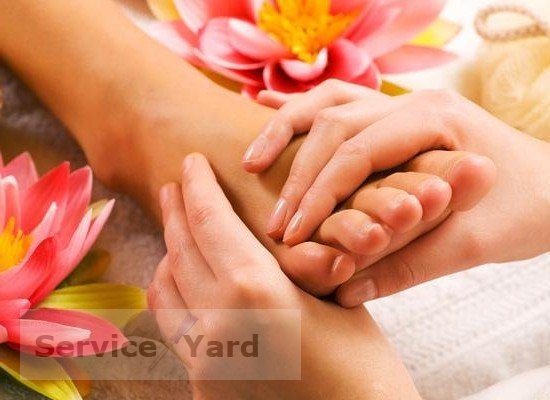 Another option on how to get rid of the fungus on the legs involves the use of herbal infusion:
Another option on how to get rid of the fungus on the legs involves the use of herbal infusion:
- To prepare the broth, take 3 large sheets and pour 2 liters of water.
- Boil the mixture for 15 minutes over low heat.
- Infuse the solution for 3-4 hours.
- Strain.
- Pour the solution into the container and lower your legs for 40-45 minutes.
- After the bath, treat the feet with apple cider vinegar.
- Wear clean socks.
- Repeat the procedure every 2-3 days. Continue treatment for a month or until the fungus completely disappears.
Important! Trays with milkweed can be alternated with salt. In this case, the fungus on the legs will go much faster.
Garlic salt infusion
A good effect is given by treating the fungus with infusion of salt and garlic. Proceed as follows:
- 1 tsp Dissolve the salts in 1 liter of water.
- On 1 tbsp. l of this solution add 1 large clove of crushed garlic.
- Strain and squeeze through cheesecloth.
- To the resulting mixture add 4 tbsp. l prepared saline solution.
- With a ready-made product, lubricate the affected area 2 times a day.
Important! For treatment, prepare a fresh solution each time.
Celandine
If celandine is growing in your country house, then use its juice, which has a strong antifungal effect:
- Tear off a plant.
- With orange juice grease the affected areas
Important! Itching will immediately be felt, but as the juice is absorbed, discomfort will pass.
- After a couple of minutes, lubricate the affected area with juice again.
- Repeat the procedure 3-4 times.
- It is necessary to apply juice 2 times a day for a month.
Celandine dry grass can be used for compresses:
- Grind celandine into powder.
- Mix the resulting mass with tea tree oil until a thick emulsion is obtained.
- Apply the mixture in the form of compresses to the affected areas daily until the fungus comes off (or a new nail grows).
Important! This treatment option for foot fungus has received many positive reviews and is widely used in folk medicine as the easiest and most affordable means.
A decoction of herbs for the affected areas
Use the following ingredients:
- Oak bark;
- calendula inflorescences;
- medicinal verbena (herb);
- blackberry (dried berries);
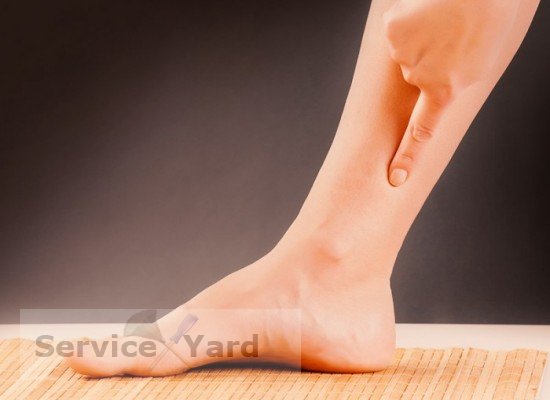 From the listed ingredients, prepare a decoction:
From the listed ingredients, prepare a decoction:
- Mix everything in equal amounts.
- 3 tbsp. l the resulting mixture pour 1 tbsp. water.
- Put the product on a small fire for 25-30 minutes.
- Strain the broth.
- Use for lotions and washing the affected areas.
Important! Do not immediately prepare a large amount of infusion for the entire course of therapy. Better make a decoction in small portions. A fresh remedy is more effective for treating a fungus on the legs than standing a week or two.
Fungus Ointment
The ointment can be prepared at home and applied to the legs before bed until the fungus completely disappears. Preparation Scheme:
- 2 fresh chicken eggs, pour 70% with acetic acid.
- Leave in a dark place until the shell is completely dissolved.
- Add 200 g of butter and 4 tbsp. l acetic acid.
Foot ointment
To cure the fungus, you can use this method. You will need goose or pork fat, yellow sulfur, copper sulfate. Prepare the ointment as follows:
- Mix all components in equal amounts.
- Mix thoroughly until smooth.
- Put the mixture on fire and bring to a boil.
- Place the product in a dark room until completely cooled.
- Lubricate affected skin with ointment once a day.
Composition for the treatment of nail fungus from available medicines
To prepare the product, you will need medical alcohol, vinegar essence and glycerin. Prepare the composition in this way:
- 2 tsp mix alcohol thoroughly with 2 tsp. vinegar essence and 1 tsp. glycerin.
- Drop the resulting fluid onto the affected area of the nail.
Perform the procedure until the affected nail comes off.
to contents ↑Important! Apply the prepared composition directly to the damaged nail plate. Avoid contact with skin.
Preventative measures
It is much more advisable to initially prevent the disease than to look for ways and methods of treating a fungus on the legs. Follow simple rules:
- Never wear someone else's shoes. Away refuse the slippers offered to you (take your interchangeable shoes as a guest).
- Do not overheat your feet.
- Change your socks in time and dry your wet and sweaty shoes.
- Do not use other people's pedicure tools.
- When visiting a solarium, swimming pool, sauna, bathhouse or therapeutic baths, do not forget to bring rubber slippers with you.
- Do not go barefoot in hotels, sports locker rooms and other public places.
- Use rubber mats in the bathroom and shower, as they can always be flushed with hot water for prevention.
- After taking a shower or bath, wipe your feet thoroughly, especially the area between your toes.
- When buying, do not measure shoes on your bare foot.
- Monitor the condition of your legs, properly care for them, take timely measures when sweating, dryness, corns appear, do not allow the appearance of cracks in the legs.
- If you suspect that you have picked up a fungus after visiting public places, when you come home, treat your feet with a cotton swab dipped in 6% solution of vinegar or wash them with tar soap.
to contents ↑Important! Observing such simple rules, you do not have to wonder how to cure the fungus on the legs - they will always be in order.
Additional conditions for effective treatment
Whatever method of treating the fungus you choose, be sure to treat all the shoes, socks, carpets, bath, etc. before treatment. Use boiling, ironing, vinegar for these purposes, use special formalin for shoes. After processing - hide the shoes in a bag.
If a member of the family has the disease, take the necessary precautions: until the patient cures the fungus, do not let him walk around the house barefoot, and also sit down on the sofa and chair. Before taking a bath, wash the surface with any liquid chlorine product that kills the fungus. Wipe scissors, nail files with alcohol.
to contents ↑Stock footage
Follow the listed preventive and precautionary measures and remember that the disease is easier to prevent than to treat!
- How to choose a vacuum cleaner taking into account the characteristics of the house and coatings?
- What to look for when choosing a water delivery
- How to quickly create comfort at home - tips for housewives
- How to choose the perfect TV - useful tips
- What to look for when choosing blinds
- What should be running shoes?
- What useful things can you buy in a hardware store
- Iphone 11 pro max review
- Than iPhone is better than Android smartphones



